- News
- Reviews
- Bikes
- Components
- Bar tape & grips
- Bottom brackets
- Brake & gear cables
- Brake & STI levers
- Brake pads & spares
- Brakes
- Cassettes & freewheels
- Chains
- Chainsets & chainrings
- Derailleurs - front
- Derailleurs - rear
- Forks
- Gear levers & shifters
- Groupsets
- Handlebars & extensions
- Headsets
- Hubs
- Inner tubes
- Pedals
- Quick releases & skewers
- Saddles
- Seatposts
- Stems
- Wheels
- Tyres
- Tubeless valves
- Accessories
- Accessories - misc
- Computer mounts
- Bags
- Bar ends
- Bike bags & cases
- Bottle cages
- Bottles
- Cameras
- Car racks
- Child seats
- Computers
- Glasses
- GPS units
- Helmets
- Lights - front
- Lights - rear
- Lights - sets
- Locks
- Mirrors
- Mudguards
- Racks
- Pumps & CO2 inflators
- Puncture kits
- Reflectives
- Smart watches
- Stands and racks
- Trailers
- Clothing
- Health, fitness and nutrition
- Tools and workshop
- Miscellaneous
- Buyers Guides
- Features
- Forum
- Recommends
- Podcast
review
At road.cc every product is thoroughly tested for as long as it takes to get a proper insight into how well it works. Our reviewers are experienced cyclists that we trust to be objective. While we strive to ensure that opinions expressed are backed up by facts, reviews are by their nature an informed opinion, not a definitive verdict. We don't intentionally try to break anything (except locks) but we do try to look for weak points in any design. The overall score is not just an average of the other scores: it reflects both a product's function and value – with value determined by how a product compares with items of similar spec, quality, and price.
What the road.cc scores meanGood scores are more common than bad, because fortunately good products are more common than bad.
- Exceptional
- Excellent
- Very Good
- Good
- Quite good
- Average
- Not so good
- Poor
- Bad
- Appalling
Are you looking for a rapid aero road bike without splurging serious cash? Then take a gander at the £2,899 Canyon Aeroad CF SL Disc 7.0, a bike that takes the company's aerodynamic road frame and equips it with a Shimano 105 groupset and deep section Reynolds carbon wheels for a recipe that provides all the speed you could ever wish for backed up by great handling and pretty decent comfort provided you make the most of the available tyre clearance.
Pros: Fast, handling, looks, value for money
Cons: Weight, firm ride, non-tubeless wheels
This latest generation Aeroad was launched way back in 2014 and has notched up a fair few victories along the way, including Tour of Flanders in 2015 with Alexander Kristoff behind the bars. Disc brakes came in 2017 but the core design continued largely unchanged and, in early 2019, a CF SL version was added to the existing CF SLX.
Not sure what CF SL and CF SLX are all about? Let me explain. Canyon has two tiers of carbon frames for the Ultimate, Endurace and Aeroad here. CF SLX uses the best carbon fibre for the lightest weight and the best blend of stiffness and compliance. CF SL frames come out of the same mould but use less of the pricey high-grade carbon in the layup, which keeps the cost down but does mean a small hit on the scales, and less obviously the stiffness and compliance will be a smidgen behind the level of the CF SLX.
Ride and handling
Can you really tell the difference between the CF SLX and CF SL? After several weeks of riding taking in my local roads, some Belgian pave and the local chain gang where I spend an hour trying not to get dropped by kids half my age, I'll be honest and admit it's really hard to tell you're on a 'cheaper' carbon frame.
I've ridden various Aeroads over the years and it's a bike that has always impressed with how fast it is. It's not the way it accelerates, but the way it makes holding high speeds easier than conventional road bikes. The frame, wheels and position all help you to maintain big speed with less power. Assessing aero claims is a tricky business but when you ride an aero bike the benefits of a bike and its parts being designed to reduce drag are made abundantly clear. Strava segment PRs come easily with this bike.
If I can introduce some negatives, and I'm being really picky here because it's my job, the ride is a bit harder than I'd like, and how I remember the original Aeroad CF SLX I reviewed back in 2016 to be. However, due to the generous tyre clearance that come as a side benefit of disc brakes, I was able to swap the 23/25mm Continental tyres for a pair of plump 28mm Vittoria Corsa Speed tyres. I then headed to Belgium for three days of cobble bashing including the Tour of Flanders sportive.
Far from cosseting you against the cobbles (as the new Specialized Roubaix I rode over the same cobbles a few days later did) the wider tyres went a long way to smoothing the previously quite hard ride. Remember, this is a bike that won the Tour of Flanders race on its debut and came second this year, so it's certainly capable on rough roads.
Back on regular roads, the same 28mm tyres provide a useful degree of extra suspension helping to smooth the roughly surfaced back roads in my neck of the woods, without really negatively impacting the speed and handling. So if you're considering this bike I'd certainly factor in a tyre upgrade.
Handing is a strong trait with the Aeroad. It corners brilliantly with plenty of stability, instilling confidence to push fast and hard, backed up by the solid hydraulic disc brakes. You can get the Aeroad with rim brakes so Canyon isn't forcing you onto discs, but for general fast riding on open roads with all the hazards we have to deal with, they are massively reassuring in their ability to stop you very quickly with loads more control at your fingertips.
There's ample stiffness in the frame and fork to ensure the Aeroad is a willing accomplice when putting down some serious watts, but a reminder of the low price and high weight is a lack of snappiness when attacking, sprinting or racing for the top of a crest when you're shoulder to shoulder with a mate also racing to the summit.
I'm really splitting hairs here though. For the most part the Aeroad is very satisfying if you crave a fast bike whether it's for racing or just generally bashing around the countryside because sometimes there's no better feeling than going flat out.
Frame design and disc brakes
When we shared this bike on Instagram the day it arrived in the office, it fooled a lot of people into thinking it was a lot more expensive than it actually was. For sure it looks a top-end bike, but the price is kept reasonable by Canyon's direct-sales model, which offers positives (cheaper bikes) and negatives (can't see the bike in the shop, delivery expectations - the wait times can be longer than you'd want).
Despite being launched in 2014, the Aeroad isn't at all showing its age. It still looks modern and in my opinion, this silver paint finish gives it a premium appearance that belies the relatively low price. I especially like the angled Canyon downtube logo and the black section of seat tube that provide a slimming appearance.
Other than the lower grade of carbon used in the construction, you get a frame that shares identical tube shapes to its more expensive big brother. To recap, that means Trident 2.0 tube profiles (essentially Kamm tail shape) and skinny head tube and fork blade. The mechanical gear cables and hydraulic hoses are routed inside the frame and fork and where they are exposed, they are at least neat and tidy.
Geometry is shared down to this cheaper model too and it's slammed and aggressive. This size medium, which fitted my 5'11' frame perfectly I should add, has a 551mm stack and 397mm reach. The wheelbase (989mm) keeps the handling nicely balanced by providing stability at high speed and agility at lower speeds and through corners. The short 147mm gets the bars nice and low and puts you in a position that is immediately more aero, but there are a few spacers should you want to raise the front up a bit.
The move to disc brakes in 2017, with flat mount calipers and 160 front and 140mm rear disc rotors, came with the smallest percentage increase of drag in the company's own wind tunnel testing, so marginal you most likely won't even notice. More noticeable is the 70g frame weight increase, which with the different components adds to about a 500g weight penalty for the Aeroad CF SL 7.0 Disc over the Aeroad CF SL 7.0. If you live in the mountains that might be a deal breaker but for typical UK riding I personally feel the disc benefits outweigh the extra weight. And I need every help I can get on the hills too!
If you're worried about weight, you really ought to be looking at the Canyon Ultimate rather than the Aeroad, because here weight takes a backstep in the pursuit of improved aerodynamics. That's because about 80 to 90% of your energy is spent on pushing through the air at speeds of up to 20mph, and even on a gradient up to about 5% you're still going fast enough for aerodynamics to still be a factor.
Another compelling upshot of the disc brakes is the increased tyre clearance, and a clear win for the bike if you're aiming to use it for longer rides over varied terrain. Seeking more comfort, I fitted a pair of 28mm wide Vittoria Corsa tyres which at 70-75psi provided a noticeable uplift in comfort over rough roads with no detectable loss of performance or speed.
Equipment
Keeping the price in check is an excellent Shimano 105 mechanical groupset with hydraulic disc brakes. It's got all the performance and tech of Dura-Ace and Ultegra above it but a few material changes keep the price down with a small weight increase.
In use, it's a lovely groupset. Really, if we're being brutally honest, it's all anyone really needs. The hoods are nicely shaped with a grippy rubber material that works great without-gloves, and the shifting is clean and accurate, if perhaps not quite as crisp and light as Dura-Ace mechanical, but we're talking tiny fractions here.
What is the same is the excellent hydraulic disc brakes providing awesome stopping performance giving superb control with no fuss. You do however pay a £400 premium for the disc brakes over the rim brake CF SL 7.0 (£2,499) which is a shame, but I'd personally stump up the extra - it's hard to go back to rim brakes when you've sampled discs this good.
A 52/36t chainset points to the speed intentions of the bike and an 11-30t offers a good get out of jail free card on longer/steeper ascents. The gear levers are mounted to Canyon's own aluminium compact drop handlebar and stem, and together it's clean, smart and understated. No fancy one-piece carbon handlebar here for extra aero points but this setup is stiff and easy to adapt for different fit requirements.
Saddle choice is personal but the Fizik Arione is a good pick because the length gives good seated comfort and the padded nose is ideal when you're on the drops going flat out chasing a wheel or in a solo breakaway.
And then there are the wheels. It's rare to get a set of deep section carbon fibre wheels on bike in this price range, which really starts to make the Aeroad CF SL 7.0 Disc look like great value when you compare it to anything else, but it should probably be added these are not the latest state-of-the-art wheels: we first tested the Aero 58s back in 2013. https://road.cc/content/review/89326-reynolds-aero-58-clincher-wheels
That being said, they are a fast set of wheels and really do contribute to the overall speed. As the name suggests, the wheels combine different depth rims (58mm front, 62mm rear) with a narrower front rim (28mm) and wider rear rim (30mm) and both sharing the same 19mm internal width. Reynolds says helps to reduce the frontal surface area, a key factor in minimising drag.
The rims also aren't tubeless-ready, which is a shame when tubeless options are increasing all the time and most new carbon rims are now tubeless ready, providing a future upgrade path. They're laced with 24 Sprint spokes and brass nipples to the company's own Allroad hubs with a Centre-Lock disc rotor interface.
With a claimed 1,730g they're a reasonable weight for a wheelset of this depth but they are clearly aimed at speed on flat to rolling roads rather than being lightweight climbing wheels.
Indeed they are fast in a straight line and through corners when there's little wind, but being a light rider I found them a little erratic in really strong crosswinds. More worrying was an occasional buffeting/shimmying sensation from the front of the bike in certain wind conditions, but I hasten to add it was only occasional, and not something I could easily replicate. For the most part, they just felt fast. I switched to some shallower 40mm carbon wheels which provided a nicer all-around balance on rolling terrain.
Rivals
Browse the internet for comparable aero road bikes and you'll find most have pretty hefty price tags, given the rapid development in the field of aerodynamics in recent years. You're getting a great price because this current Aeroad has been around for a few years compared to say the ultra-modern Cervelo S5 Disc (starting £4,899) or Specialized S-Works Venge (starting £6,500) – the S-Works Venge Di2 Disc I reviewed a few months back costs considerably more.
Those expensive bikes aside, there really aren't many choices in the £2,000-£3,000 price bracket if you want a 105-equipped aero road bike with decent deep section wheels. The Giant Propel Advanced 2 Disc (£2,299) is definitely worth a look because you get a carbon aero frame, tubeless-ready tyres and deep section wheels, 105 groupset and the company's funky aero integrated stem for internal cable routing. https://www.giant-bicycles.com/gb/propel-advanced-2-disc
The Merida Reacto Disc 4000 (£2,000) looks a strong contender, again an aero carbon frame with all the modern features like internal cable routing dropped seat stays and disc brakes, and equipped with most of a Shimano 105 groupset. You don't get flash carbon wheels though but you could probably buy some with the money saved.
You can view a lot more aero road bikes here:
Hottest aero road bikes 2019 Pt 1
and here…
Hottest aero road bikes 2019 Pt 2
Verdict
Great speed with a great price
road.cc test report
Make and model: Canyon Aeroad CF SL 7.0
Size tested: medium
About the bike
List the components used to build up the bike.
Driven by a full Shimano 105 groupset with aero gains from high profile Reynolds AR 58 full carbon wheels wrapped in slick Continental Grand Prix tyres, the Aeroad CF SL 7.0 is built for speed.
FRAME
Frame
Canyon Aeroad CF SL Disc
Material: Carbon
More details
Fork
Canyon FK0041 CF SLX Disc
Material: Carbon
More details
DRIVETRAIN
Rear Derailleur
Shimano 105 R7000 SS
Front Derailleur
Shimano 105 R7000
Cassette
Shimano 105 R7000 11-28 11s
Crank
Shimano 105 R7000
Chainring size: See 'Geometry and dimensions' below
Bottom bracket
Shimano Pressfit BB72
Chain
Shimano CN-HG701 11s
BRAKES
Shift-/ Brake Lever
Shimano 105 R7020 2s
Weight: 305 g
Shift-/ Brake Lever
Shimano 105 R7020 11s
Weight: 305 g
Brake Rotor
Shimano RT70
Disc Mount: Centerlock
WHEELS
Wheel
Reynolds AR58 DB
Rim Material: Carbon
More details
Wheel
Reynolds AR62 DB SH11
Rim Material: Carbon
More details
Tyre
Continental Grand Prix 5000 23mm
Casing: Vectran Breaker
More details
Tyre
Continental Grand Prix 5000 25mm
Casing: Vectran Breaker
More details
Thru Axle
Canyon Thru Axle
Material: Aluminium
More details
Thru Axle
Canyon Thru Axle
Material: Aluminium
More details
COCKPIT
Stem
Canyon V13
Handlebar
Canyon H16 Aerobar AL
Material: Aluminium
More details
Handlebar Tape
Canyon Ergospeed Gel
SEAT
Saddle
Fizik Arione R5
Seatpost
Canyon S27 Aero VCLS CF
Material: Carbon
More details
Tell us what the bike is for and who it's aimed at. What do the manufacturers say about it? How does that compare to your own feelings about the bike?
This is what Canyon have to say:
"More and more pro riders are making the switch to racing with disc brakes, and for riders tackling real world conditions, that switch makes sense. The Aeroad CF SL Disc 7.0 is our base offering in disc-equipped aero road performance.
"Our new Aeroad CF SL range makes WorldTour-beating performance more attainable than ever. Armed with watt-saving features and pinpoint handling for diving into fast corners, all paired with legitimately fast components, you get a setup that's fully race-ready and won't break the bank."
Where does this model sit in the range? Tell us briefly about the cheaper options and the more expensive options
It's the most affordable Aeroad with disc brakes in the range
Frame and fork
Overall rating for frame and fork
8/10
Tell us about the build quality and finish of the frame and fork?
Very high level of finish belies the price tag
Tell us about the materials used in the frame and fork?
Full carbon fibre in the frame and fork, a slightly lower grade than used in the Aeroad CF SLX
Tell us about the geometry of the frame and fork?
Aggressive race bike as you'd expect of a bike designed for racing. This size medium, which fitted my 5'11' frame perfectly, has a 551mm stack and 397mm reach.
How was the bike in terms of height and reach? How did it compare to other bikes of the same stated size?
I found the fit perfect
Riding the bike
Was the bike comfortable to ride? Tell us how you felt about the ride quality.
The position is comfortable, if you're used to a low front end. The ride quality is on the firm side, but wider tyres helped
Did the bike feel stiff in the right places? Did any part of the bike feel too stiff or too flexible?
It's got plenty of stiffness for dropping some serious watts
How did the bike transfer power? Did it feel efficient?
Very well. Yes it did
Was there any toe-clip overlap with the front wheel? If so was it a problem?
None
How would you describe the steering? Was it lively neutral or unresponsive? Alert
Tell us some more about the handling. How did the bike feel overall? Did it do particular things well or badly?
It's a responsive and fast handling road bike
Which components had the most effect (good or bad) on the bike's comfort? would you recommend any changes?
I'd recommend wider tyres
Rate the bike for efficiency of power transfer:
7/10
Rate the bike for acceleration:
7/10
Rate the bike for sprinting:
7/10
Rate the bike for high speed stability:
7/10
Rate the bike for cruising speed stability:
7/10
Rate the bike for low speed stability:
7/10
Rate the bike for cornering on descents:
7/10
Rate the bike for climbing:
5/10
The drivetrain
Rate the drivetrain for performance:
7/10
Rate the drivetrain for durability:
7/10
Rate the drivetrain for weight:
7/10
Rate the drivetrain for value:
7/10
Wheels and tyres
Rate the wheels for performance:
8/10
Rate the wheels for durability:
7/10
Rate the wheels for weight:
6/10
Rate the wheels for comfort:
7/10
Rate the wheels for value:
7/10
Rate the tyres for performance:
7/10
Rate the tyres for durability:
7/10
Rate the tyres for weight:
7/10
Rate the tyres for comfort:
5/10
Rate the tyres for value:
7/10
Controls
Rate the controls for performance:
7/10
Rate the controls for durability:
7/10
Rate the controls for weight:
7/10
Rate the controls for comfort:
7/10
Rate the controls for value:
7/10
Your summary
Did you enjoy riding the bike? Yes
Would you consider buying the bike? Maybe
Would you recommend the bike to a friend? Yes
How does the price compare to that of similar bikes in the market, including ones recently tested on road.cc?
There aren't a lot of comparable bikes with such a competitive package of parts, but the Giant outlined above does push the Canyon hard on value for money
Rate the bike overall for performance:
7/10
Rate the bike overall for value:
8/10
Use this box to explain your overall score
For a race-ready bike the Canyon Aeroad CF SL is a very appealing package and if you don't mind a firm ride then the speed and handling will certainly win you over. It's a WorldTour race winning bike at a damn low price
About the tester
Age: 31
I usually ride: My best bike is:
I've been riding for: 10-20 years I ride: Every day I would class myself as: Expert
I regularly do the following types of riding: road racing, time trialling, cyclo cross, commuting, touring, mtb,
David worked on the road.cc tech team from 2012-2020. Previously he was editor of Bikemagic.com and before that staff writer at RCUK. He's a seasoned cyclist of all disciplines, from road to mountain biking, touring to cyclo-cross, he only wishes he had time to ride them all. He's mildly competitive, though he'll never admit it, and is a frequent road racer but is too lazy to do really well. He currently resides in the Cotswolds, and you can now find him over on his own YouTube channel David Arthur - Just Ride Bikes.
Latest Comments
- eeney 1 hour 27 min ago
Bont double wide wearer here. Even Lake, for me, are too narrow in the toebox and midfoot, but Lake work for a lot of people....
- ktache 1 hour 43 min ago
I seem to recall saint Chris being more on recent BBC road cycling coverage rather than less.
- Rendel Harris 2 hours 3 min ago
So either it has to have the characteristics of a pogo stick or, more likely, that's a typo for "bunch sprint", which is equally nonsensical...
- chrisonabike 2 hours 55 min ago
I never heard of anyone having their leg sliced off / unexpectedly wiping out using a spoon brake, but discs...
- chrisonabike 2 hours 57 min ago
Meanwhile, in the Netherlands... (cycling to hospital, s''Hertogenbosch, Utrecht. Cycling to hospital and cycle parking, Assen)....
- Rendel Harris 3 hours 23 min ago
Sorry to say but your current trainer isn't going to be much use for online training in the way you describe, your virtual trainer will rely on not...
- andystow 4 hours 12 min ago
🎵 Sunshine on my shoulders makes me happy, sunshine in my eyes can make me crash. 🎵
- Jack Sexty 4 hours 37 min ago
The main featured link goes to the actual product - unfortunately the auto-generated widget is pulling in links to the old product right now, but...
- mike the bike 5 hours 8 min ago
Me too. And, somewhere in the shrubbery, there lurks a pheasant who achieved high office in said RCUK.













































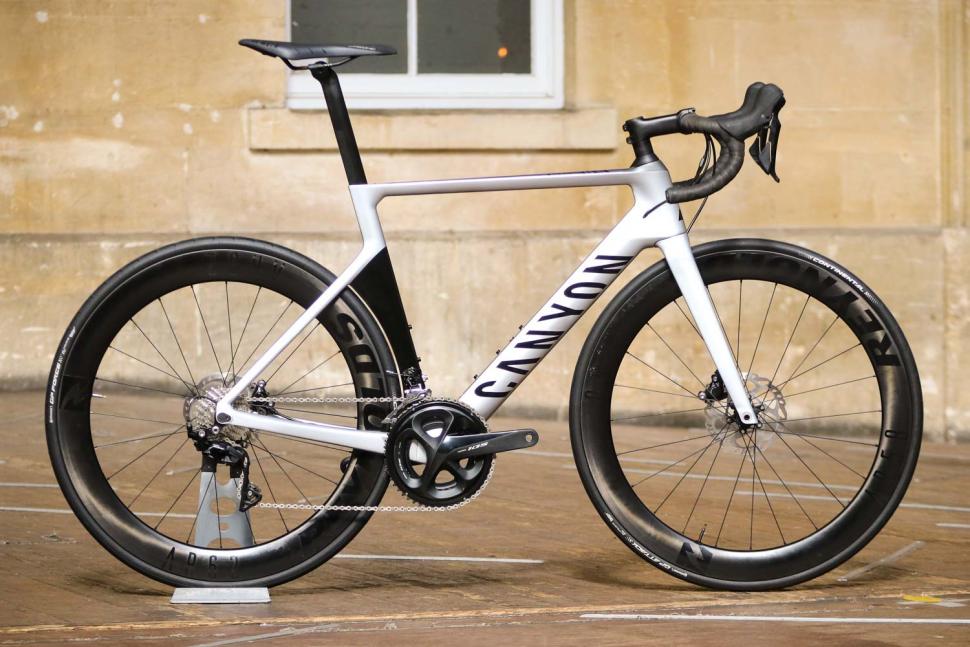
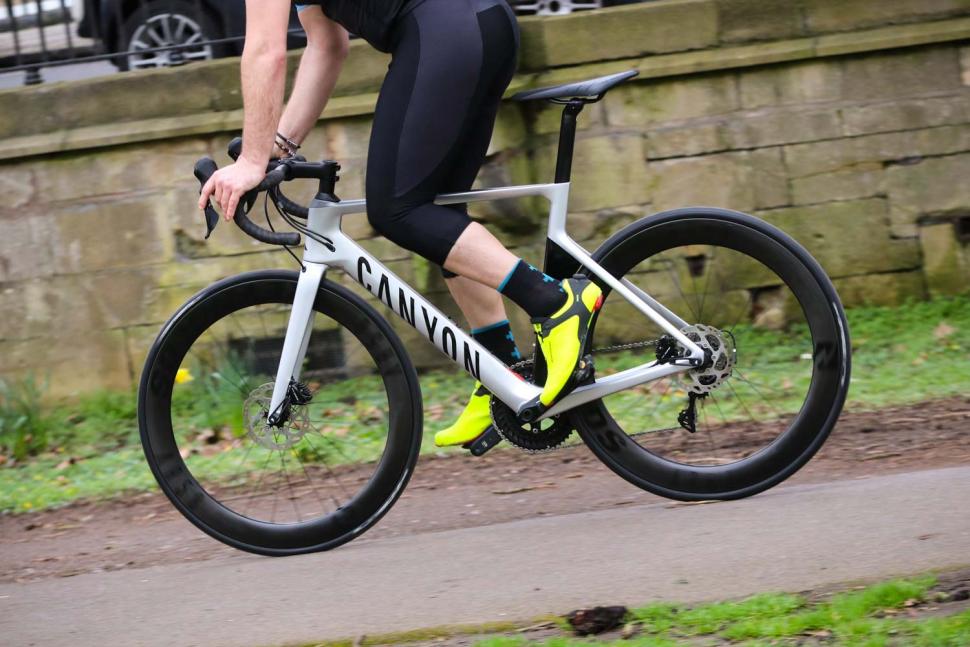
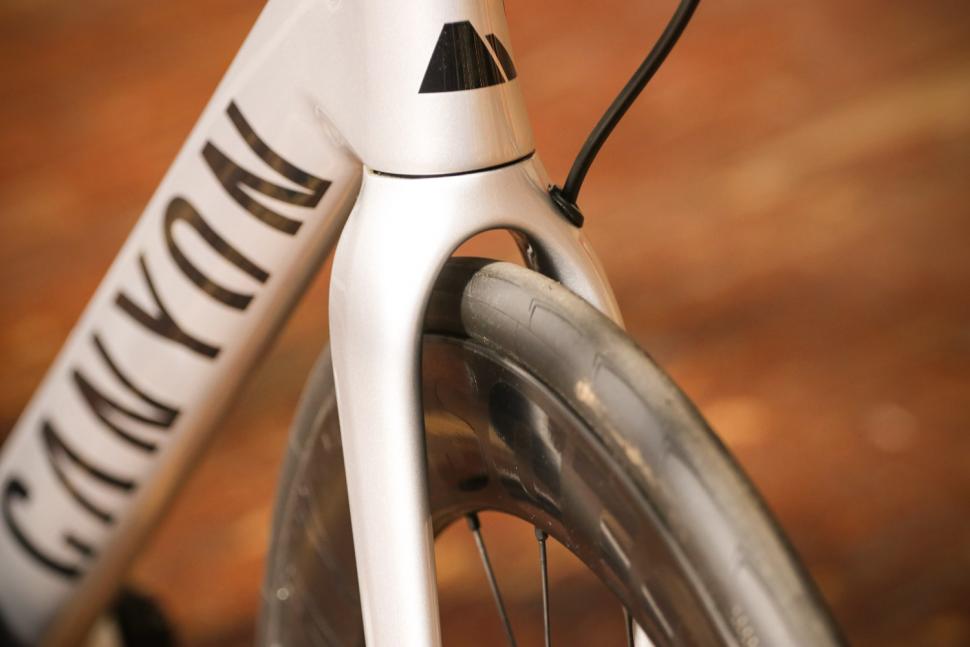

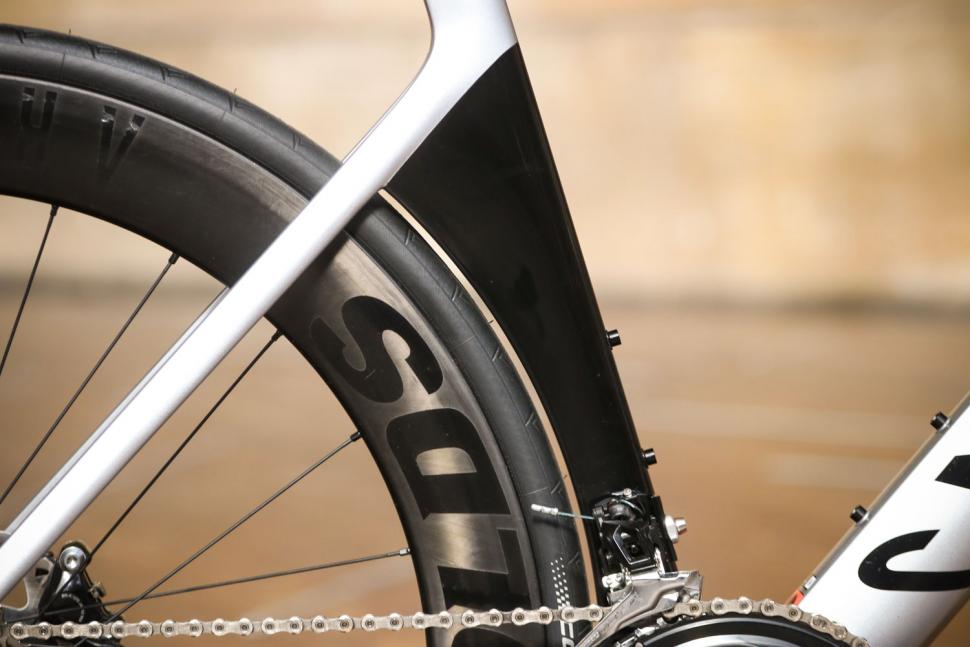



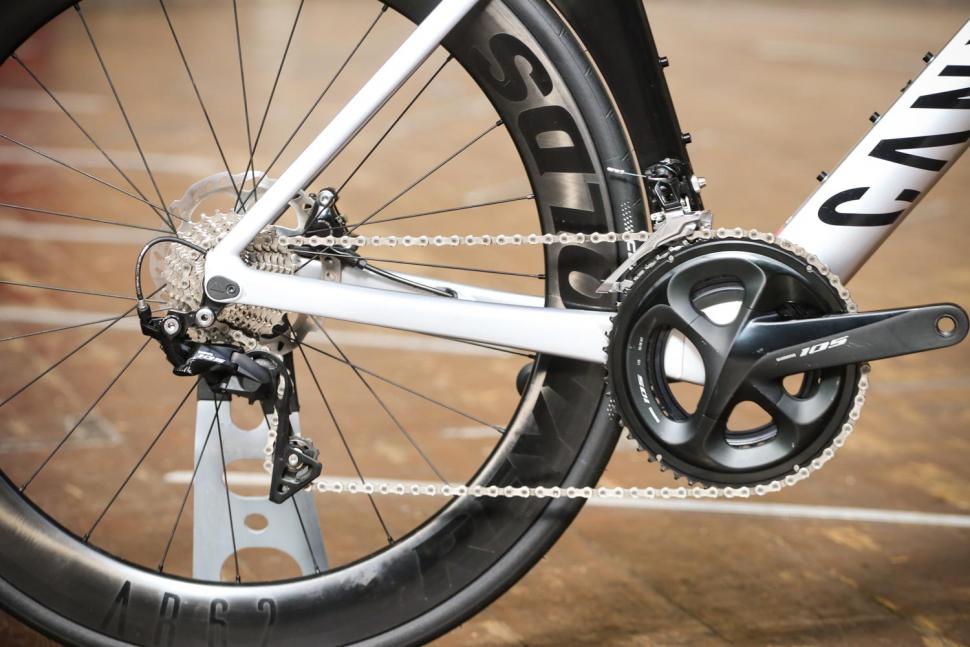
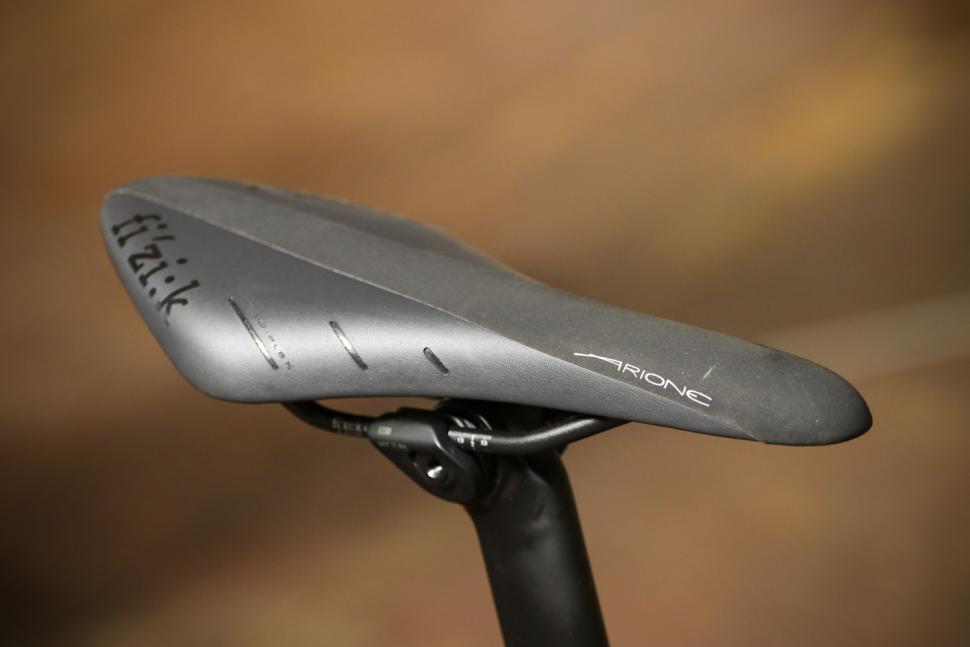

Add new comment
8 comments
I think you guys are being a little harsh here:
Although the frame was introduced in 2014 the disc version was launched in 2017 and the more cost effective SL version was only just launched in 2019.
Same for the wheelset; the orginal Reynolds AR58 design was launched in 2013 but used internal nipples and filled up with water. The design was modified over the years to external nipples, lower weight and tubeless ready. The wheelset are now supplied with tubeless valves.
The wheelset on the test bike are another design upgrade to disc brake specific version including a differentiated rim depth of 62/58.
If you consider the 2499 for the rim braked version, which uses direct mount calipers, it comes in at an actual 7.2kg with Canyon's H31 integrated cockpit which is a 230 optional upgrade. That is pretty good for a 105 equipped bike with a proven aero frame and wheels particularly for a road racer on a limited budget.
Hi PP - I'm being dumb. How do you "upgrade" this bike? I just get the option to "buy" - I don't get any option to change the spec.
Hi TLO, you purchase accessories at the same time as you place an order for the bike. By doing it this way you get a lower price for the accessories. If you purchase the accessories separately at a later date then the price is higher.
Clearly with an integrated cockpit you have to know precisely which stem length and bar width you want and that is not always possible with a new frame unless you know your stack and reach values accurately.
However there are usually quite a few Canyon integrated cockpits for sale on eBay where peeps have bought new bikes and the included cockpit doesn't suit them.
Note that Canyon use a 1.1/4" steerer tube so their stems and cockpits only suit their own bikes (plus maybe Giant's "overdrive").
That's my point too - people should not buy bikes based on the 'more carbon, less aluminium, better bike' gimmick. Only a few aero points plus you can adjust the bar and stem on this one; even if you know yor S+ and R+ values well as you say, you may noot be comfortable on the cockpit, and you can't testride the bike to get to know if it suits you.
Maybe I missed it, but I don’t see where the headline price of £2449 comes from. The article and the Canyon site both show it as £2899 which makes it much less appealing.
Yes that's a mistake in the top line, which I've corrected now. It's the lower price for this bike with rim brakes
5 year old aero design and a porky 8+ kilos. Looks nice but no thanks.
This. Plus 6 year old wheel design. There must be other aero machines out there that are more recently designed that warrant a more urgent review (still waiting on anyone to review the Orro Venturi, although I think they ran into issues with supply, Focus Izalco Max, Chapter 2 Rere, low-end versions of the SystemSix, Madone etc etc)